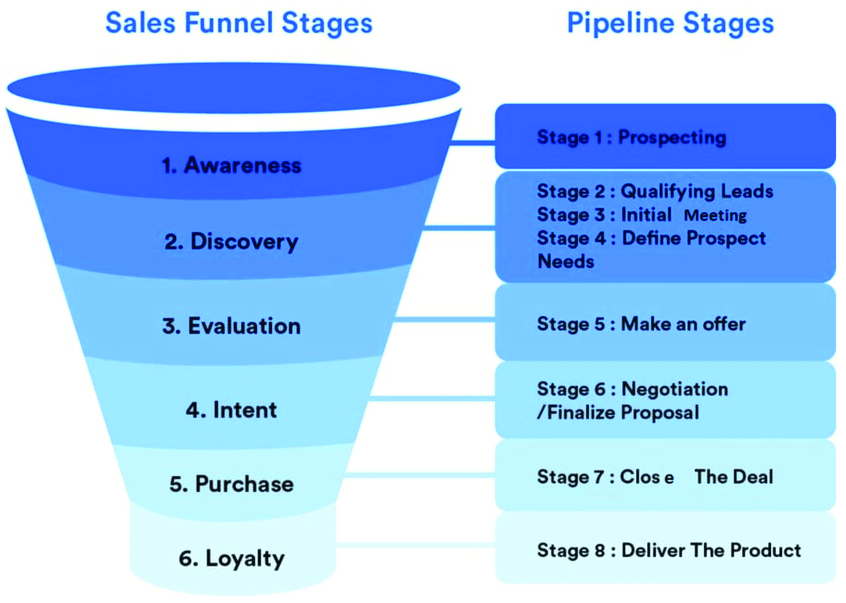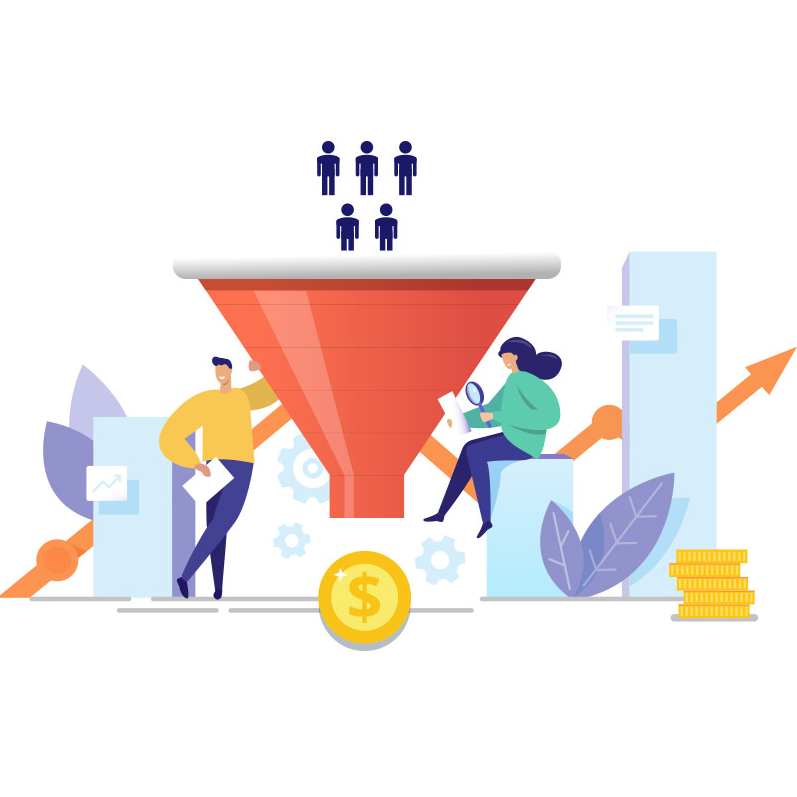In the ever-evolving realm of business, understanding the intricate dynamics between all 5 stages of sales pipeline is not just a skill; it’s a strategic necessity. Imagine the potential revenue slipping through your fingers because you lack a concrete grasp of your sales cycle or an effective sales funnel strategy. The problem is clear: inefficiency in these areas can stifle your growth, leaving profits on the table.
But fret not; this is where we delve into the stages of the sales pipeline, agitating the issues you might face, and providing a comprehensive solution to help you seize untapped opportunities, optimize your sales process, and watch your revenue soar. Welcome to a world where every lead counts, every prospect is nurtured, and every sale is strategically orchestrated.
What is Sales Pipeline?
A sales pipeline often likened to the circulatory system of your business, is an intricate process that systematically manages the journey from a potential lead to a converted customer. It’s a visual representation of the various stages a lead goes through, and it’s an indispensable tool for any organization serious about boosting revenue and maintaining a steady stream of loyal clients.
To put it simply, a sales pipeline is your roadmap to sales success. At a glance, it offers insights into the current status of your sales prospects, helping you understand where each lead stands and what needs to be done to propel them toward a purchase decision.
In more technical terms, a sales pipeline provides a structured framework for sales teams to track and manage their interactions with potential clients. By doing so, it ensures that no opportunity slips through the cracks, ultimately maximizing conversion rates and profits.
What Sales Cycle in Business?
In short, the sales cycle is the entire process a potential customer undergoes. This includes from the first moment they become aware of your product or service to the point where they make a purchase.
This cycle is often a unique and intricate journey, varying from one business to another. It can be swift and straightforward, with customers making swift decisions, or it can be a prolonged, intricate dance, requiring persistent efforts to nurture prospects and convert them into loyal clientele.
Understanding a sales cycle is crucial. It may be unique to your business. So, allow yourself to tailor your sales pipeline to fit the rhythm of your potential client’s decision-making process. By aligning the two, you can harmonize your efforts with their needs, creating a symphony of success for your business.
Best Sales Funnel Strategy
Shorten Buyer Journey
In a fast-paced world, customers value convenience and efficiency. Shortening the buyer journey is a strategy that involves minimizing the steps and time it takes for a prospect to become a customer. This can be achieved through streamlined processes, user-friendly interfaces, and prompt responses to inquiries.
In-App Purchase
With the rise of mobile apps, in-app purchases have become a powerful tool for businesses. By integrating a seamless buying experience within your app, you can capture spontaneous purchases and maximize revenue.
Promotional Code After Sales
Post-sale engagement is as important as the initial purchase. Offering promotional codes and incentives to customers after a sale can encourage repeat business and foster loyalty.

5 Stages of Sales Pipeline
1. Lead Generation
The first stage of your sales pipeline is all about casting a wide net to attract potential customers. This involves marketing efforts such as content creation, social media campaigns, and SEO optimization. The goal is to generate interest and bring prospects into your sales funnel.
2. Qualify Leads
Not all leads are created equal. In this stage, you’ll sift through your pool of prospects to identify those who are genuinely interested and have the potential to become paying customers. This process involves lead scoring and categorization based on various criteria.
3. Overcome Objections
It’s natural for potential customers to have doubts or objections. This stage is about addressing their concerns and providing them with the information they need to make an informed decision. Effective objection handling can make or break a sale.
4. Close Sales
The pinnacle of the sales pipeline, the closing stage, is where the magic happens. This is when your sales team uses persuasive techniques, negotiation skills, and product knowledge to seal the deal and turn prospects into customers.
5. Nurture Customer
Once the sale is complete, the journey doesn’t end. Nurturing your customers is essential for long-term success. This involves providing ongoing support, delivering exceptional service, and creating opportunities for upselling or cross-selling.
Conclusion
Navigating all these 5 stages of sales pipeline is akin to embarking on a meticulously orchestrated journey through the intricacies of business conversion. Each stage is a unique purpose and challenges. The sales funnel strategy sets the course, commencing with lead generation, the inception of potential customer relationships.
Subsequently, overcoming objections emerges, a pivotal phase for addressing doubts and fostering confidence. The penultimate phase, closing sales, signifies the culmination of persuasive artistry, leading to profitable transactions. Lastly, the perpetual cycle continues with nurturing customers, the heart of retaining loyalty. Mastering these stages within the sales pipeline is the cornerstone of successful sales endeavors.




